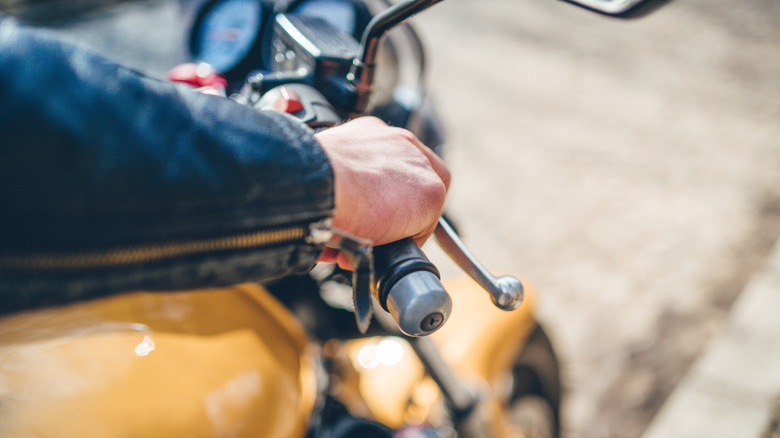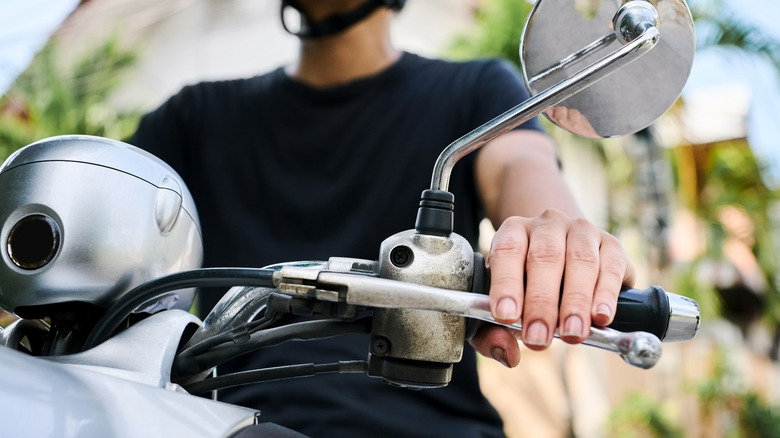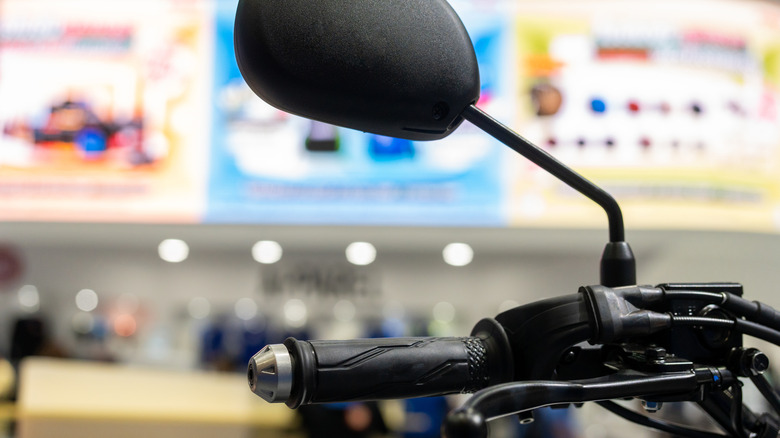Why Do Motorcycle Handlebars Have Weights On The End?
If you have ridden a motorcycle even once in your life or have ridden a few motorcycles before making your first purchase, chances are, you might have noticed a curious design detail on its handlebars. We're talking about the small cylindrical pieces of solid metal bolted to the very ends of the handlebars. For those unaware, these solid metal weights exist for a very specific reason. Known as motorcycle bar-end dampers or handlebar weights, these weights serve to soften the vibrations produced by motorcycle engines, lessening their impact by the time the vibrations reach your hands, thereby ensuring a comfortable ride.
Bar end dampers have become a common sight on motorcycles these days. They are typically found on road-focused motorcycles ranging from simple single-cylinder motorcycles to a high-revving, fast, inline four superbike. Even though motorcycle engines have gotten smoother and more efficient over the years, thanks to the inherent nature of IC engines, they do tend to generate a significant amount of vibrations when running. These vibrations tend to travel through the motorcycle frame and eventually reach the handlebars. Add to that the buzz from the road, the wheels, and other moving parts of the motorcycle, and the result is a constant tingling that reaches the hands of the riders.
Adding weights to the end of the handlebars is one of the ways in which motorcycle manufacturers lessen the impact of vibrations on the rider. Without these dampers, even a short ride on a motorcycle may leave riders with tingling fingers, stiff wrists, and an uncomfortable sense of fatigue. This is why even bikes that look stripped-down and minimalist often still carry these small but vital components.
How do bar-end dampers work?
There is no getting around the fact that when a motorcycle engine runs, vibrations are a guaranteed byproduct. When these vibrations eventually reach the handlebars, they build up and transfer the energy directly into the rider's hands, leading to discomfort or numbness on long rides. Studies of motorcycle handlebar dynamics show that the bars have a natural frequency at which they vibrate, and when engine vibrations align with that frequency, the vibration is amplified.
Bar-end weights (also called bar-end dampers) are a simple and effective solution to this problem. By adding mass at the ends of the handlebars, they shift the natural frequency of the bars away from the vibration frequencies produced by the engine. This reduces the amplification effect, meaning fewer vibrations reach your hands. Riders experience a smoother, more comfortable ride because the bars no longer resonate in sync with the engine.
It is pertinent to note that adding a random amount of weight to the bar ends does not guarantee vibration-free rides. If an incorrect weight is added to the bar end, it could actually make the vibrations worse.
There's a secondary benefit to fitting heavier bar-end weights: they increase the rotational inertia of the handlebars. This added inertia makes the steering slightly more stable, smoothing out sudden inputs caused by potholes, bumps, or overcorrection by the rider. While factors such as steering geometry and stabilizers play a bigger role in avoiding "tank slapper" oscillations, properly weighted bars contribute to a front end that feels more planted and less twitchy at high speeds.
The benefits of bar end dampers
The primary benefit of bar-end dampers is comfort. Long-distance motorcycle tourers are well aware of how numb, tingling fingers can ruin a day on the road. In fact, even riders who typically do shorter trips will experience smoother rides if their motorcycles come equipped with bar-end weights.
The second benefit, though less obvious, is confidence. When the bars feel calm and stable, riders can focus more of their energy on enjoying the trip, adding to their confidence. With the vibrations gone, the motorcycle becomes easier, more comfortable to ride, and the rider's inputs become more precise. Riders who love putting their motorcycles into tight corners and bends will find the entire process enjoyable (and less panicky) when they do not have to worry about compensating their riding style to compensate for unwanted shaking and vibrations.
A third benefit, while not as critical as the first two, is that these bar-end weights are often the first point of impact in the event of a motorcycle tip-over incident. It is not uncommon for them to take the majority of the impact, shielding the rest of the handlebars and crucial parts like the brake and clutch levers from damage. Many aftermarket bar-end weights come in a variety of finishes and colors, letting riders personalize their motorcycles without compromising on safety or comfort.


